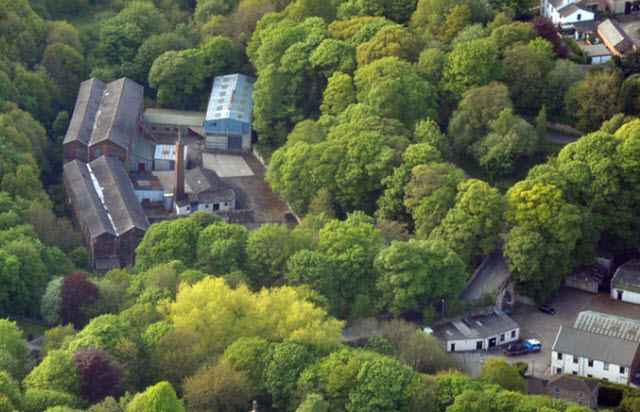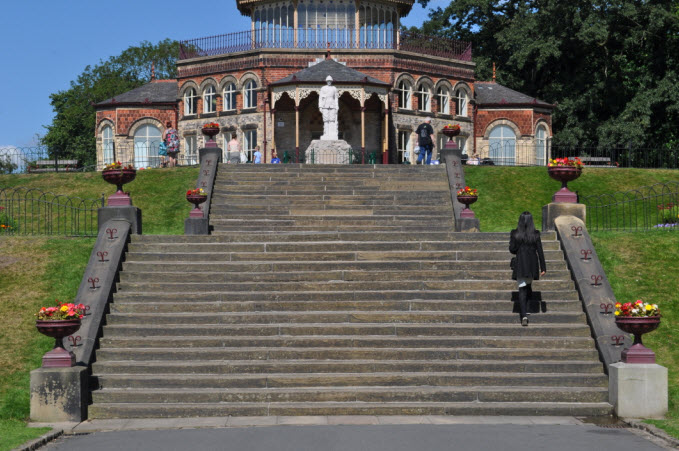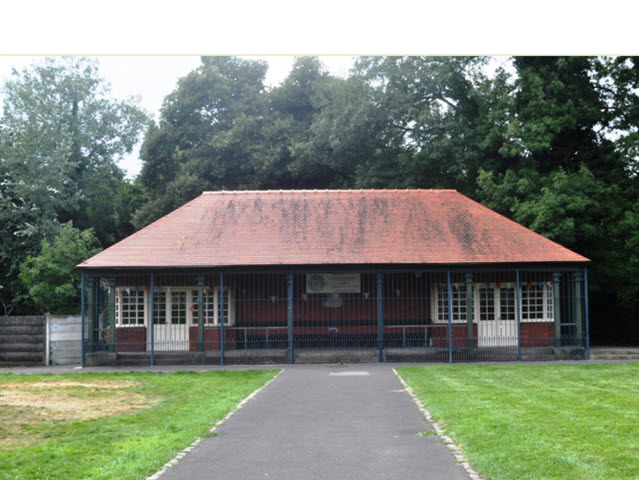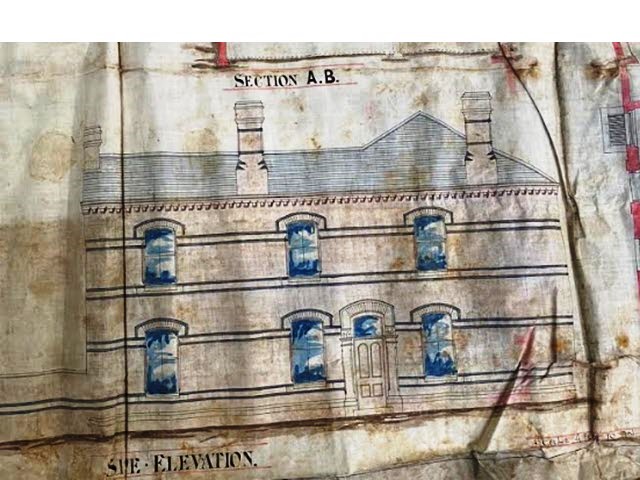Haigh Foundry
Leyland Mill Lane, Wigan
Part of Group:
At Risk: No
Description
The birth of the Industrial Revolution in Wigan
The Haigh Foundry of Wigan, also known as Haigh Iron Works, produced steam engines and a wide range of products in wrought and cast iron. This entry covers the activities of the ironworks under various companies.
Alexander Lindsay, 6th Earl of Balcarres (1752-1825), was invalided out of the army after serving as the Governor of Jamaica from 1794 to 1801, and became landlord of the delapidated Balcarres estate as his wife's inheritance.
1788 In order to exploit the resources of the estate, Lindsay entered into a partnership with James Corbett an ironfounder. The partnership included the Earl's brother, Robert Lindsay. To the foundry business was added the nearbyBrock Mill Forge.
Corbett embarked on expensive improvements, but died in 1790 without completing them. Robert Lindsay, who had made a fortune in a wide variety of undertakings in India, was reluctant to settle at Haigh, but set to with a will to improve the business, recruiting John Coward from Dukinfield ironworks on a 12 month contract. By September 1790 they had erected a blast furnace and a boring mill. However, Lindsay had no wish to continue with the management, and a young German engineer was recruited - Joseph von Baader - who started work in 1791. Baader brought with him some German carpenters and miners, who together appear to have left a trail of chaos before being dismissed.
1790 Advert: 'THE Hon. ROBERT LINDSAY and Co. having erected a BLAST FURNACE and BORING MILL at Haigh, in the neighbourhood of Wigan, beg leave to offer their scrvices to the public, in the foundry business in its various branches. Having engaged engineers and able workmen, they are enabled to undertake the compleat conftruction of fire-engines of every kind. The metal manufactured at their works, has proved of the best quality, and, in point of strength, not inferior to any in Great-Britain, as will be found on trial.
The proprietors, having every advantage that can be expended, from the bed of materials, and good situation, flatter themselves with having it in their power to give entire satisfaction to those who employ them.
Orders directed to Robert Lindsay and Co. at Haigh Ironworks, near Wigan, will be punctually attended to.
The Company have withheld this advertisement until such time as their works were fully compleated, having set out upon the principle of entering into no engagement, but what they can immediately execute.
N. B. The distance to Manchester, eighteen miles, and a good road; and one mile from the Liverpool navigation.
1793 Partnership dissolved of Lindsay, Corbett and Co.
The poor performance of the business was not solely due to human factors, for the local coal and iron ore was poorly suited to requirements. Robert Lindsay returned for a period c.1796 to sort matters out.
1804 The foundry and engineering business appears to have done well following the appointment of Robert Daglish as chief engineer
1818 Beam engine made by James Lindsay for the Hannibal Price Sugar Plantation, Jacmel, Haiti . This exists in an overgrown, derelict condition.
1835 Edward Evans and T.C Ryley formed the Haigh Foundry Co and took the works on a twenty-one year lease
1836 News item. 'A new engine, built by Evans and Thomson, Haigh Foundry, Wigan, is now running on the Liverpool and Manchester railway, which is said to possess greater power than any other engine on the line.'
1835-56 Over 100 railway locomotives were built
1837 'Engine for the Grand Junction Railway - One of the engines intended for this line of road was last week completed at Haigh Foundry, and has been tried several times, since its completion, upon the railroad between Wigan and Parkside. The engine is 22 horses' power, built upon the old principle, with a few slight alterations, and allowed to be capable of most extraordinary speed ; last evening it went the distance of a mile in the space of one minute. Several other engines are also in state of progress at Haigh Foundry, which will, no doubt prove of the first-rate locomotive power.— Wigan Gazette.'
1838 Built broad gauge locomotives Snake and Viper for the Great Western Railway.
1842/1843 Made a swing bridge for Albert Dock, Liverpool, to the design of Jesse Hartley
1843 Partnership dissolved. '...the Partnership lately subsisting between us, Edward Evans, Robert Thompson, Thomas Cropper Ryley, and Richard Reynolds Rathbone, in Haigh, in the county of Lancaster, in the trades or business of Iron Founders, Engine Makers, Iron Forgers, Spade and Edge Tool Makers, and Fire Brick Makers,under the style or firm of the Haigh Foundry Company, was this day dissolved, by mutual consent, so far as regards the said Richard Reynolds Rathbone..
1847 26th March, death of Nathaniel Eckersley, 31, partner in the Haigh Foundry Co,aged 31.
1848 Cast a large cylinder, 100" bore and about 17 ft long, for a direct acting pumping engine for Mostyn Colliery. Weight 22 tons (nearly 30 tons poured). They had erected a boring mill for this cylinder, with a capacity to bore a cylinder of 11 ft bore and 19 ft long
1847 Business address given as 'Haigh Foundry and Brock Mill Forge.
1849 Patent. William Peace, of Haigh, near Wigan, and Edward Evans, of Wigan, engineers, for improvements in steam-engines
1850 'Engines for California.— On Tuesday, the Haigh Foundry Company forwarded from their works four new engines for transhipment to California. The first was a 7-inch cylinder engine of about six horse power, the second a 6-inch cylinder of about five horse power, the third a 5¾ inch cylinder of four horse power, and the fourth a 5½ inch cylinder of about three-and-a-half horse power. They are all high pressure engines, and of beautiful construction, the mechanism being of the first and most compact description. They are built for a Manchester firm.'
1851 'The Haigh Foundry Company have just completed the planing of an immense cast-iron plate, for the use of Plate Glass Company in Lancashire.. It is to be first used for the manufacture of a mammoth plate glass, to be forwarded to the forthcoming Exhibition of All Nations.'
1852 Made a very large Bull pumping engine for Mostyn Colliery, with a cylinder 100" diameter, 14 ft stroke. 10" diameter piston rod. Wrought iron balance beams were 42 ft long, 6 ft deep at centre.
1853 Patents sealed: 'Thomas Cropper Ryley, of Haigh Foundry, near Wigan, engineer, and Edward Evans of the same place, engineer, for certain improvements in the construction of wrought iron wheels to be used upon railways, or for other purposes, and in the machinery or apparatus connected therewith. Dated Jan. 17, 1868
1853 English patents sealed: 'James Burrows, of Haigh Foundry, near Wigan, engineer, for certain improvements in the construction of steam boilers or generators, and in the arrangement of furnaces connected therewith. - Dated December 20th, 1853'
1855 'AWKWARD MISHAP.- Last week, as a large iron casting table, thirty tons weight, from the Haigh foundry, Wigan, for the Union plate glass works, St. Helen's, was being drawn by eighteen horses over a canal bridge, near St. Helen's, the bridge broke, and the waggon and table were precipitated into the canal. They were raised out in a day or two. Damage to the amount of £200 was caused by the accident.'
1855 Advertisement for sale of the lease of the works, comprising the extensive foundry, iron works, forge, fire brick and tile manufactory. Sale occasioned by expiry of the current lease, and retiremement of some members of the firm who had carried on the business for the last 20 years. The ironworks had five cupolas and three air furnaces. The equipment was powered by steam and water. The spade works had rolling mills and Nasmyth steam hammers. Apply to William Peace, Esq., Mining Engineer, Haigh, Wigan, or to Mr. Mayhew, Solicitor, Wigan.
1856 The company ceased railway building
At some point before 1857 Birley and Thompson took over the lease.
1857 Engines and boilers supplied to the 'Pope Iron' waterworks in Worcester. A new cylinder ('of a more simple construction') was ordered for the No. 1 engine in 1874
1862 Made a large Cornish pumping engine for Talacre Lead Mine, near Rhyl, with a 100" diameter steam cylinder
1865 Serious fire at Birley & Thompson's Haigh Foundry
1865 Death of two employees, Alexander Pearson (27) and Thomas Smith (15), killed by escaping steam when attempting to tighten a bolt on a leaking boiler mud-hole
Supplied a reversing rolling mill to the Shelton Iron Bar Co. and engines for the reversing mill at the LNWR Crewe Works.
Birley & Thompson concentrated on heavy engineering but made at least two locomotives and quoted unsuccessfully for the Festiniog Railway's 'Prince' class. The company produced stationary engines including a 100" x 14 ft stroke beam engine for the Talargoch Lead Mine (the engine house survives) and a 1000 h.p. McNaught compound beam engine for a cotton spinning mill. Other examples were supplied to many Lancashire collieries.
Until 1860, everything that Haigh Foundry made had to be hauled up the steep and twisting Leyland Mill Lane. Teams of up to 48 horses were needed, many hired from local farmers. However a railway line was built from the Earl of Crawford & Balcarres' colliery network at Aspull in 1860 and was replaced in 1869 by a link from the Lancashire Union Railway's 'Whelley' loop.
The foundry designed and built large winding, pumping and mill engines, heavy engineering and architectural castings until early 1885. The firm's assets were sold in September of that year. Many of the foundry buildings survive along with two cast iron bridges used by the works railway line. Part of the premises is still an iron foundry, though on a somewhat smaller scale.
For further information:- Link




